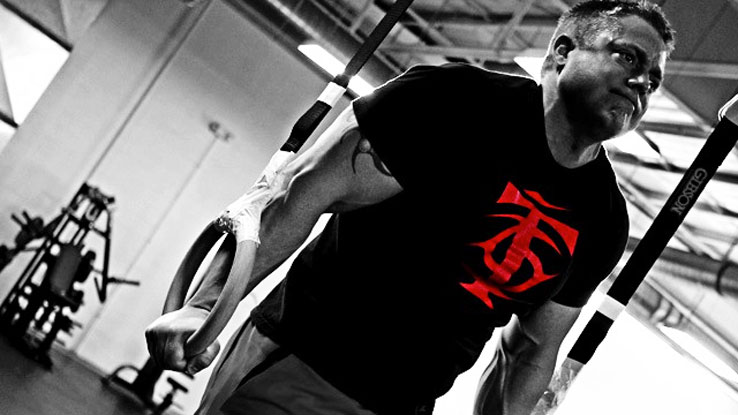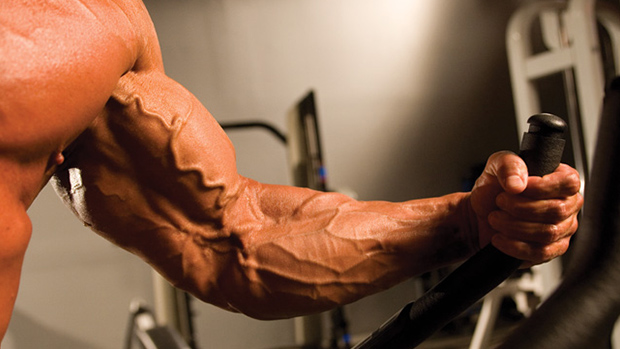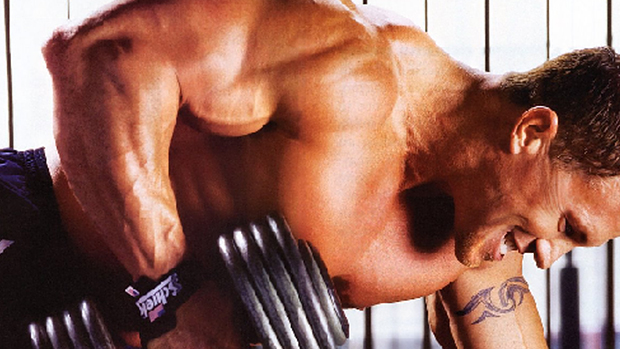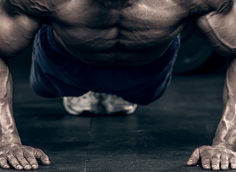There's always been a debate in the strength training community about exercise variety. Some say that you only need to stick to the big basic lifts like squat, deadlift, and bench press. Others stress a wide variety of novel exercises. Who's right?
Both! Most of your workouts should revolve around basic, compound lifts - the "money" exercises. However, a large menu of exercise options can prevent plateaus, strengthen to the big lifts, prevent overuse injuries and imbalances, and keep you from getting bored in the gym.
That's probably why this series of articles is one of our most popular: sheer boredom busting! Without further ado, here's the 15th installment!
Standing Barbell Wrist Extensions
According to Chad Waterbury, weak wrist extensors will dramatically decrease your gripping strength. These weak extensors limit the amount of strength you can develop in your wrist flexors in order to protect the joint from injury (i.e. the body limits flexor strength since the extensors are weak). Here's the solution:
1) While standing, hold an unloaded barbell or EZ-curl bar with your arms extended in front of you at shoulder height.
 |
2) Extend your wrists back as far as possible (pull knuckles up toward ceiling).
 |
 |
3) Flex your wrists down as far as possible to stretch the extensors.
4) Lift and repeat for 5 sets of 10 reps with 90 second rest periods
Follow these guidelines and you should be well on your way to improved gripping strength and bigger forearms!
Single Arm Overhead Dumbbell Squat
This might be the best "core stability" exercise we've tried. We learned this full-body challenge from Alwyn Cosgrove.
Use two dumbbells for this exercise - a heavy one and a lighter one (50-60% of the load of the first dumbbell). Taking a shoulder-width stance, hold the heavier dumbbell in your left hand by your side, and the lighter dumbbell pressed up over your head. Now, maintaining an erect torso, squat down, keeping your body weight in the center.
 |
 |
The offset load will create a large torque through your back and midsection. Fight your body's natural tendency to want to lean to one side!
Lateral Trunk Extension and Flexion
This exercise, popularized by Don Alessi, strengthens the side bending muscles of the obliques and quadratus lumborum while also stretching the typically tight illiotibial band.
Assume a side lying position with one arm placed on a flat bench. Flex the stabilized elbow into 90° adduction. The other free arm is placed overhead or on the pelvis. Extend the body so that the ankles, pelvis, shoulders, and ears are aligned. To begin eccentrically, lower the pelvis into a fully stretched position.
 |
Concentrically, raise the pelvis through the midline in a coronal direction. Be careful not to rotate the pelvis or flex the hips.
 |
Look too easy? Try three sets of 12 for each side and let us know!
Good Morning Squat
Here's one you don't see very often: a hybrid squat and good morning!
 |
 |
 |
This John Davies favorite really terrorizes the all-important posterior chain. With a shoulder-width stance, initiate the movement by pushing the back to neutral position, then drop to low squat position and back up. Once you get used to this powerhouse variation, your work loads will go way up!
The Texas Rope Pull
Here's a little known exercise for your pecs. Attach a rope to a tree and grab both ends. Now, lean forward until you get a good stretch in the pecs, then pull yourself back to the starting position.
 |
Okay, fine. We just made that up so we could run this sexy pic. Sorry. (Kinda.)
The Forward Roll
You've probably seen this classic ab exercise performed with one of those little wheel gizmos, but you don't have to have one to benefit from the forward roll. As Christian Thibaudeau demonstrates below, you can use a Swiss ball or even a barbell:
 |
 |
 |
 |
Whichever variation you choose, remember to keep the abdominals contracted/flexed during the entire movement. Contract the ab muscles as hard as you can (maximum static action) and focus on keeping this maximum contraction during the execution of the entire movement.
Also, when you roll yourself back up, you must do so with the abs, not the arms. Really focus on flexing your abs super hard to initiate the "roll-back." If your arms or back are tired after the set, you're not doing it properly.
Finally, only go as low as you can while maintaining a flat back. Flexing your abs forcefully at the start of the movement will flatten your lordosis (lower back curve) somewhat. You must maintain that flattened position during the entire movement. When you feel that your lower back is "sinking/curving," it means that you've gone too low for your capacities.
Standing Dumbbell Reverse Fly
Most lifters really neglect their "rear" delts. Here's an exercise to fix that.
Grasp two dumbbells and stand in a bent over, knees flexed, arched back position. The neck is neutral with the head propped on the top of an incline bench.
 |
Next, position the elbows extended, wrists pronated and directly under the pecs, narrower than shoulder width. To contract, rotate the wrists and arms laterally (externally), flex the elbows slightly and extend the shoulders to their end range. The elbows will assume a 110 degree angle at mid-point.
 |
Hold this mid-point briefly before lowering the dumbbells to the initial starting position. Don't forget to wipe off the incline bench, you sweaty bastard!
Donkey Calf Raise with Plates
Arnold used to perform this exercise with a couple of training partners riding his back. Of course, he was totally gay back then. Here's a version for those without a workout/life partner.
Strap some weight on a dipping/chinning belt, hang your heals off a box or step, then bend at the waist. Hold on to something roughly waist high for support, then simply perform calf raises with the usual form (lower under control, pause at both ends).
 |
 |
Band Dips
If you can easily knock out 15 dips with bodyweight, it's time to add some resistance. No weight vest or belt? No problem, just grab a resistance band or some type of tubing.
Band set-up can be done a number of ways, but here's the easiest: grab a dumbbell and place it on the floor. Use it to hold down the band. You can experiment to see how different dumbbell placements can affect the line of pull. Use a variety of positions.
 |
Now, wrap it across your upper back/traps or over your neck. This isn't the most comfortable thing in the world, bur then again, this is weight training, this is T-Nation, and dammit, you shouldn't be such a pussy anyway! Now, perform your dips. Remember to lower under control and resist the added tension.
 |
Another option is to wrap the bands in the position shown below:
 |
Both options work great!
Wrap-Up
Don't neglect the basic compound exercises. But if you need a change of pace or a boredom buster, try one of these unique movements today!





